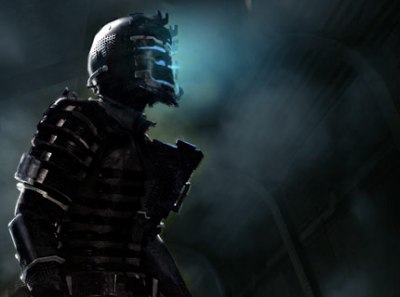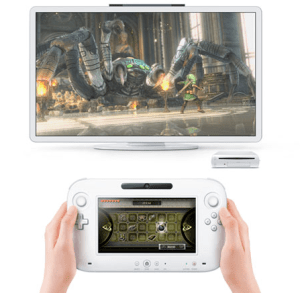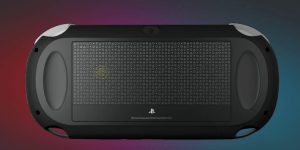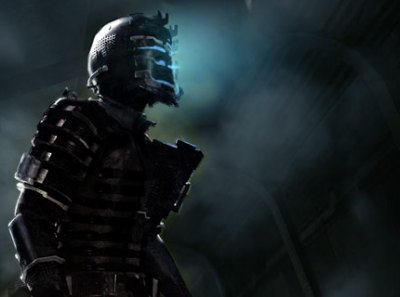With the video game industry’s largest trade show over, it’s time to wrap up some of the highlights. Here’s a look at some of the coolest new types of gaming technology VentureBeat saw at the Electronic Entertainment Expo.
 Gaikai embeds games in Facebook — Gaikai is the business-oriented equivalent of OnLive that gives game publishers a way to stream high-quality games through a web browser. The company showed off the technology by letting companies render their high-quality games like Dead Space 2 in Facebook. The service could run OnLive off its rails by giving publishers a way to directly stream games through the Internet without having to go through a middle-man game service like OnLive. Electronic Arts, one of the largest game publishers in the world and the publisher behind triple-A titles like Mass Effect 3 and Battlefield 3, is one of the first companies that Gaikai is working with to bring its games to web browsers.
Gaikai embeds games in Facebook — Gaikai is the business-oriented equivalent of OnLive that gives game publishers a way to stream high-quality games through a web browser. The company showed off the technology by letting companies render their high-quality games like Dead Space 2 in Facebook. The service could run OnLive off its rails by giving publishers a way to directly stream games through the Internet without having to go through a middle-man game service like OnLive. Electronic Arts, one of the largest game publishers in the world and the publisher behind triple-A titles like Mass Effect 3 and Battlefield 3, is one of the first companies that Gaikai is working with to bring its games to web browsers.
Gamers can switch between remastered and classic Halo graphics on the fly — Microsoft announced that it would remaster the first game in the Halo series, Halo: Combat Evolved, for the Xbox 360 at E3 this year. The new version will feature high-definition graphics that appear in the latest games in the series like Halo: Reach and recreate the first maps of the Halo franchise for multiplayer games. But players can switch back to “Classic Mode,” which will revert to the same graphics the original version of the game had when it shipped in 2001, at any time when they are playing the game.
 The whole game is part of the 10th anniversary of the release of Halo: Combat Evolved, which helped popularize first-person shooter games on home consoles and created a franchise that has given Microsoft an incredible cash cow. 343 Industries — which took over the development of the Halo franchise from Bungie, the development studio originally responsible for Halo: Combat Evolved — is working on the game.
The whole game is part of the 10th anniversary of the release of Halo: Combat Evolved, which helped popularize first-person shooter games on home consoles and created a franchise that has given Microsoft an incredible cash cow. 343 Industries — which took over the development of the Halo franchise from Bungie, the development studio originally responsible for Halo: Combat Evolved — is working on the game.
OnLive renders a web browser in the cloud — OnLive, an online service that runs games on remote cloud servers and streams the game over the Internet, unveiled a web browser that uses the same technology at E3 this year. But the advantage OnLive has, along with its super fast cloud computers, is an incredibly fast internet connection that can download a lot of information very quickly, compress it and stream it over the Internet to end users. The whole experience usually ends up being much faster than typical web browsing, which can take upwards of a minute to fully download the contents of a website. OnLive can download that same content in a matter of seconds and stream it over the Internet at about the same quality and speed as a YouTube video.
 That means websites that use heavy-duty Flash videos and games are suddenly much more accessible on mobile devices like tablets and smartphones. It also gives iPhone and iPad users, who have had to go without games and other web sites running on Flash, a way to access those websites and run them at the same quality that other tablets and personal computers can.
That means websites that use heavy-duty Flash videos and games are suddenly much more accessible on mobile devices like tablets and smartphones. It also gives iPhone and iPad users, who have had to go without games and other web sites running on Flash, a way to access those websites and run them at the same quality that other tablets and personal computers can.
Sony lets gamers take their games anywhere with PS3, PS Vita connectivity — Sony is dead set on getting their games into every aspect of a gamer’s lives. To do that, the company is working with game developers to give players a way to transfer a player’s saved games, which store all the information about where a player was at a given time in the game, between PlayStation 3 and PlayStation Vita versions of the same game. That will give players a way to play the same game regardless of where they are.
Konami is one of the first companies that will use that capability — though the company is labeling it as “Transfarring.” Sony also showed off the technology with a new PlayStation 3 and PlayStation Vita title called Ruin, a brawler-style role-playing game that plays a lot like the Diablo series released by Blizzard. The new tool will also be available in the Metal Gear Solid and Zone of the Enders HD Collection, though Sony wouldn’t indicate what other games would use it when the PlayStation Vita comes out later this year.
 The Wii U packs a punch — Nintendo isn’t known for having the best graphics in the business. The Nintendo Wii, for example, is much weaker than the other consoles in the current console generation and doesn’t play games in high-definition. That’s going to change with the Wii U, which looks like it will be more powerful than the Xbox 360 and the PlayStation 3. Nintendo showed off a high-definition demo of Link, a character in The Legend of Zelda, fighting off a giant spider — and the whole demo looked gorgeous. Everything in the demo shifted dynamically when the lighting changed or when there was any kind of wind in the room and the characters looked great.
The Wii U packs a punch — Nintendo isn’t known for having the best graphics in the business. The Nintendo Wii, for example, is much weaker than the other consoles in the current console generation and doesn’t play games in high-definition. That’s going to change with the Wii U, which looks like it will be more powerful than the Xbox 360 and the PlayStation 3. Nintendo showed off a high-definition demo of Link, a character in The Legend of Zelda, fighting off a giant spider — and the whole demo looked gorgeous. Everything in the demo shifted dynamically when the lighting changed or when there was any kind of wind in the room and the characters looked great.
Nintendo even tried to show off a little bit by giving E3 attendees a way to quickly change the lighting from a daytime setting to a nighttime setting, which would normally required the game to re-render everything to account for a new lighting setup. The Wii U was able to do that without missing a beat, changing the lighting completely and still chugging along at somewhere between 45 and 60 frames per second while still showing off a giant battle and high-definition graphics.
 The PlayStation Vita’s rear touchpad is surprisingly cool — While at E3, VentureBeat’s Dean Takahashi and I got a chance to try out a few games on Sony’s latest console, the PlayStation Vita. That device features a touchpad on the main screen of the device and a touchpad on the back of the device. The touchpad was pretty fun to use in games like Uncharted and LittleBigPlanet and it ended up feeling like a useful part of the experience without getting in the way of the game like some new controller peripherals tend to do.
The PlayStation Vita’s rear touchpad is surprisingly cool — While at E3, VentureBeat’s Dean Takahashi and I got a chance to try out a few games on Sony’s latest console, the PlayStation Vita. That device features a touchpad on the main screen of the device and a touchpad on the back of the device. The touchpad was pretty fun to use in games like Uncharted and LittleBigPlanet and it ended up feeling like a useful part of the experience without getting in the way of the game like some new controller peripherals tend to do.
For example, when playing Uncharted, you have to swipe down on the back of the touchpad to climb up a rope. At first it seems a bit strange, but it then feels surprisingly intuitive after the second or third time doing so. Climbing ropes suddenly has a unique gesture that you instinctively know to use when you approach a rope. Likewise, in LittleBigPlanet, players use the back touchpad to push things that are in the background of the game to the foreground. That means that if players can’t make a jump without falling off the edge of the world, they can push a platform from the background into the foreground and just run across the gap.
 Dust 514 is the next step in massive online games — Dust 514 is much like other FPS games at first, dropping players into closed matches that consist of team-based matches with certain objectives like capturing a position or eliminating the opposing team. But the whole game is tied very closely to EVE Online, a massive role-playing game where gamers play as pilots in space in the EVE Online universe. Each match that a Dust 514 player participates in is actually a contract created by an EVE Online player, a completely separate game that features tactical space combat and lots of player-driven politics.
Dust 514 is the next step in massive online games — Dust 514 is much like other FPS games at first, dropping players into closed matches that consist of team-based matches with certain objectives like capturing a position or eliminating the opposing team. But the whole game is tied very closely to EVE Online, a massive role-playing game where gamers play as pilots in space in the EVE Online universe. Each match that a Dust 514 player participates in is actually a contract created by an EVE Online player, a completely separate game that features tactical space combat and lots of player-driven politics.
Both Dust 514 and EVE Online are run on the same servers, so they regularly interact with each other. For example, the squads on the planet’s surface can fire artillery into space to damage ships in a battle in EVE Online, and ships in the EVE Online universe can initiate orbital strikes on the planet’s surface to help Dust 514 players. They are two completely different games. EVE Online is geared towards hardcore MMO players and the average play session lasts around 3 hours. Dust 514 is a game for FPS gamers that only have 10 or 20 minutes to play. But they exist in the same universe and regularly interact with each other, creating an experience another MMO game has yet to match.
Be sure to check out VentureBeat for a full wrap up of the show and some of the crazier things we saw last week.
 We’ll be exploring the most disruptive game technologies and business models at our third annual GamesBeat 2011 conference, on July 12-13 at the Palace Hotel in San Francisco. It will focus on the disruptive trends in the mobile games market. GamesBeat is co-located with our MobileBeat 2011 conference this year. To register, click on this link. Sponsors can message us at sponsors@venturebeat.com. To pitch a startup at the Who’s Got Game contest at GamesBeat 2011, click here.
We’ll be exploring the most disruptive game technologies and business models at our third annual GamesBeat 2011 conference, on July 12-13 at the Palace Hotel in San Francisco. It will focus on the disruptive trends in the mobile games market. GamesBeat is co-located with our MobileBeat 2011 conference this year. To register, click on this link. Sponsors can message us at sponsors@venturebeat.com. To pitch a startup at the Who’s Got Game contest at GamesBeat 2011, click here.
VentureBeat's mission is to be a digital town square for technical decision-makers to gain knowledge about transformative enterprise technology and transact. Learn More

